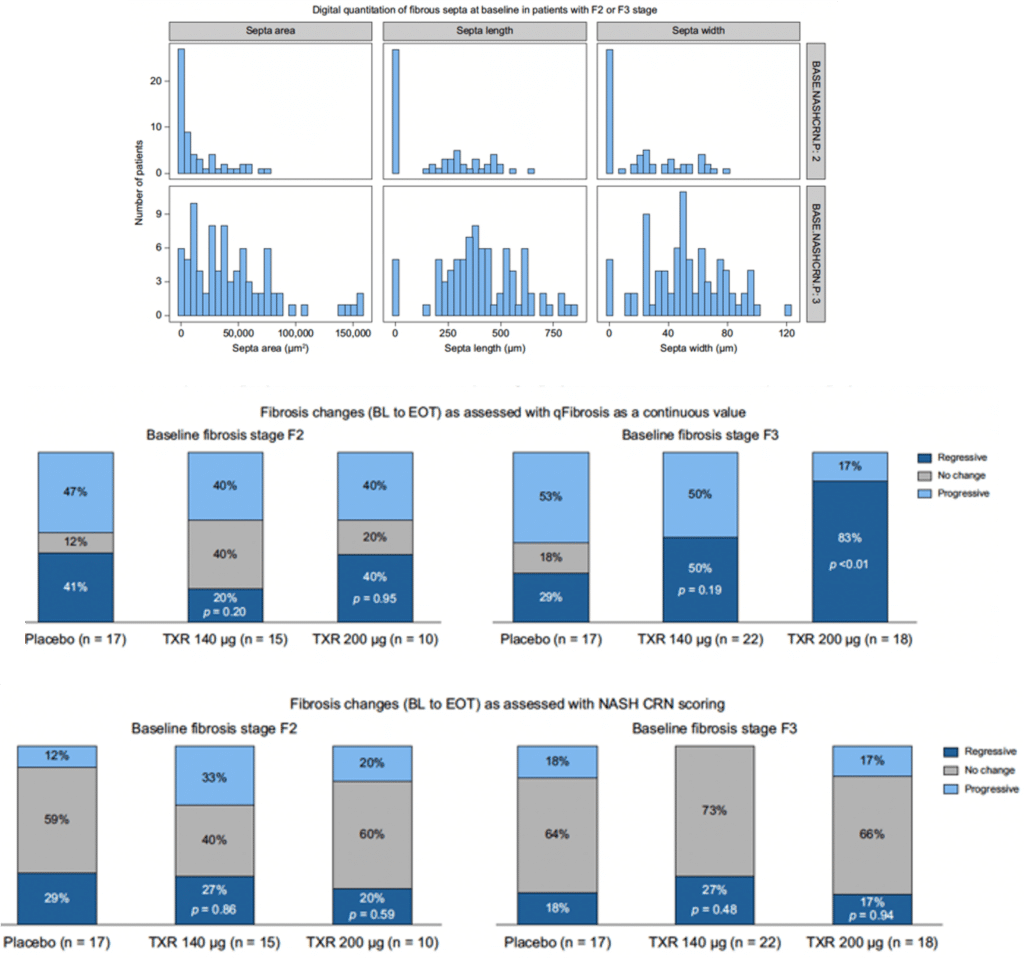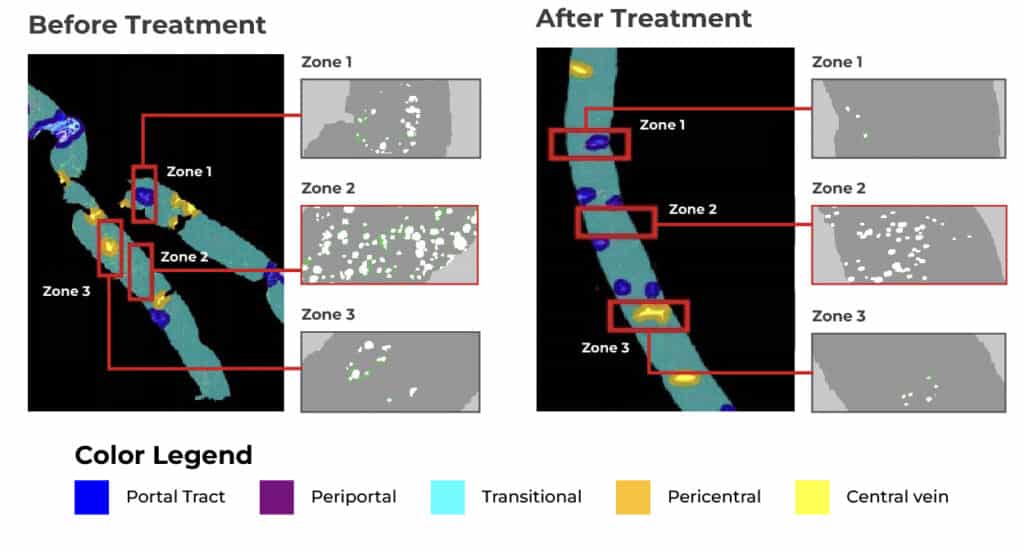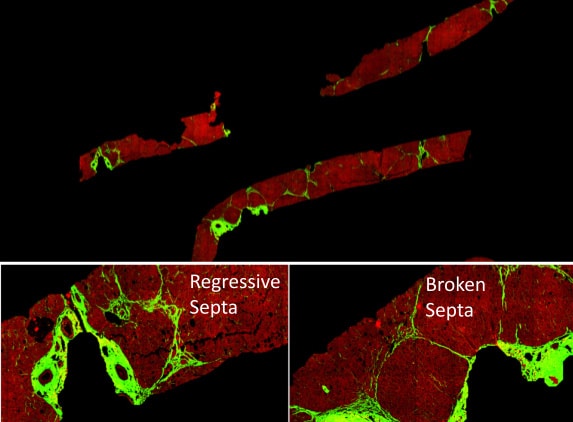qFibrosis® for MASH and MAFLD
Transforming Liver Fibrosis Assessment
qFibrosis® is an automated, quantitative technique to evaluate liver fibrosis in patients with Metabolic Dysfunction-associated Fatty Liver Disease (MAFLD) and Metabolic Dysfunction-associated Steatohepatitis (MASH). It uses second harmonic generation/two-photon excitation fluorescence (SHG/TPEF) microscopy and artificial intelligence (AI) to analyze liver biopsy images and output values on a continuous scale for measurement of severity of fibrosis.

Quantification of over 180 Collagen Parameters
Developed with Experts
qFibrosis® was developed by HistoIndex in partnership with clinician key opinion leaders and trained, validated and tested extensively to confirm robust performance.
Using predictive models to correlate histological fibrosis staging systems and quantitative analysis of architectural, morphological and spatial distribution of collagen fibers, qFibrosis® consolidates these collagen parameters into a single quantitative index on a continuous scale.
Implementing AI-Assisted Evaluation in Practice
A New Era in Evaluation
qFibrosis® has shown excellent ability to quantify fibrosis accurately in clinical trials and to provide greater insights into treatment-induced histological changes. This makes qFibrosis® a state-of-the-art tool for assessing liver fibrosis in the biopsies of patients with MAFLD/MASH.
Improved Fibrosis Measurement
Provides quantitative and continuous measurement of fibrosis to capture subtle changes and better differentiates between intermediate fibrosis stages by traditional semiquantitative (categorical) staging systems

Abdurrachim, Desiree., et al. AASLD 2023.
Greater Sensitivity to Regression
Identifies fibrosis regression in patients post-treatment who were otherwise deemed as “unchanged” by semiquantitative and ordinal staging system

Naoumov, Nikolai V., et al. Journal of Hepatology 77.5 (2022): 1399-1409.
Zonal Analysis
Allows localized assessment of fibrosis changes in portal tracts, periportal, transitional, pericentral and central veins of the liver lobule, which correlate better to disease states than overall collagen measurement of the entire biopsy

Multi-parametric Approach
Analyzes hundreds of collagen-related architectural and morphological patterns including fiber count, length, width, cross linkages and the co-localization of these collagen patterns with the activities of MAFLD in their respective spatial zones in order to provide richness beyond histopathological categorical fibrosis staging

Future-Proofing Pathology
We are always innovating to extract deeper insights from tissue complexity and drive transformative outcomes for our partners. If you would like to explore how a digital pathology platform can improve your findings, let us know.
